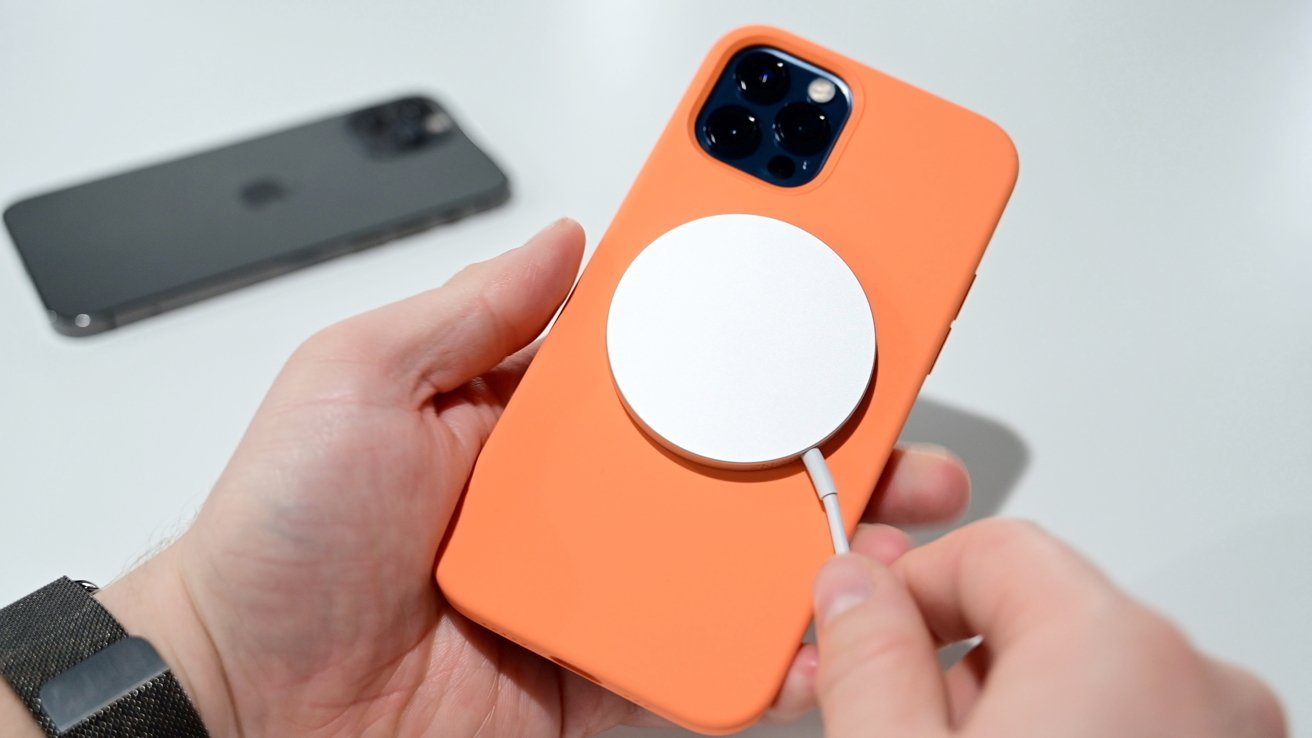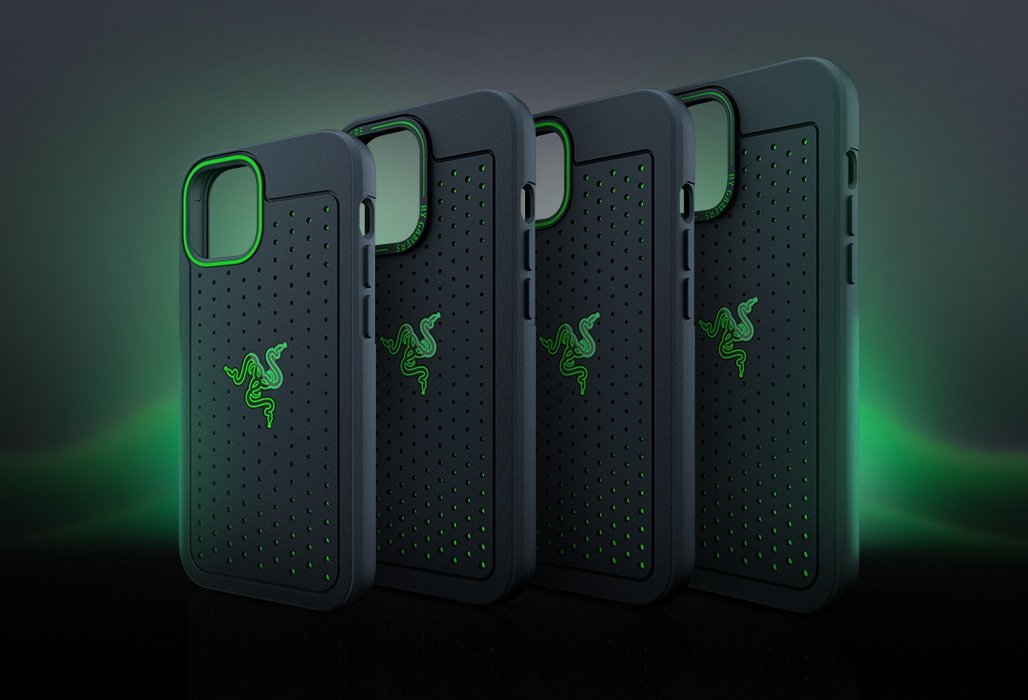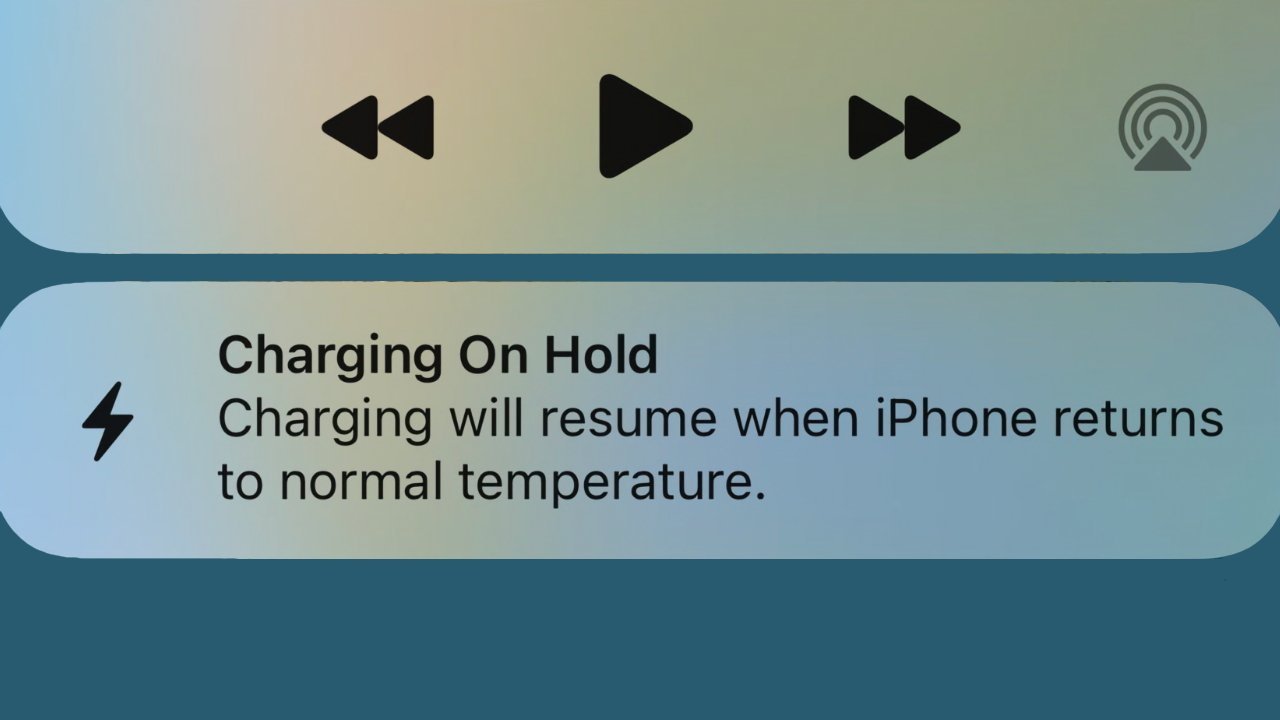iPhone 15 overheat complaints are inconsistent, and it's unclear what's going on
Some iPhone 15 users are complaining their smartphones are getting too hot, but not everyone feels the burn, and in nearly every case, the temperatures are still within spec.
![[Everything is Fine meme]](https://photos5.appleinsider.com/gallery/56529-114864-everything-is-fine-heat-iphone-xl.jpg)
Just like any other major piece of hardware that is regularly updated, the release of a new iPhone model invites scrutiny from industry observers, critics, and early adopters. While the complaints and fears cover a number of areas, one that has resurfaced for the iPhone 15 is claims of the device overheating.
It's been less than a week after release, and there have been reports of the latest model getting a bit toasty when under certain scenarios, but especially in the time after wireless charging has stopped.
In a number of instances, people have complained that their iPhone has gotten hot, or more specifically, a bit too warm to use comfortably. Complaints range from seeing temperatures rise above 40C, to others who find slightly lower temperatures to be a little worrying.
Others are also taking to social media to confirm their iPhone isn't affected by overheating at all.
It is unclear why some users experience hot iPhones while others don't have trouble at all. One of our editors had some issues over the weekend, but they've cleared since. Another never had any problems at all.
While many could take the heating to be a problem, it may not really be an issue. An iPhone heating to 44C isn't entirely abnormal behavior, despite the personal distress it may cause.
Heat generation
Excluding problems like the rare battery rupture, an iPhone can heat up in a variety of ways.
The most obvious is environmental factors, namely where you're placing the iPhone, regardless of your actual use of it. Leaving it out in the sun on a very hot day can certainly heat up the iPhone, even without it being turned on.
An iPhone can heat up in a few ways, and it basically boils down to transfers of energy or the usage of energy.
The first, transfers of energy, refers to when you recharge an iPhone's battery. Whether by wireless charging over Qi or MagSafe, or using a physical cable, the transfer of power isn't a perfect process, and heat can dissipate.
Heat generation also occurs with the battery itself, since recharging a battery is a chemical reaction that produces heat as a byproduct. While batteries don't tend to get warm through discharge, they do get a lot warmer when you're recharging the device, simply because of that exothermic chemical process.

MagSafe on an iPhone
Complaints of hot iPhones after charging are common, simply because charging devices tend to get things warm. It's an almost unavoidable issue.
The other way an iPhone can get warm or hot is through usage. Running games and intensive applications that consume more resources and power than typical can warm up components like the CPU and GPU over time.
In Apple's hardware, the CPU and GPU are on the same system-on-chip (SoC), which makes things a bit tougher to deal with.
It is plausible for more pedestrian tasks to warm an iPhone up, such as phone calls, but only to a very negligible degree that most people won't consciously notice. A gaming session that hammers the CPU and GPU however, could quickly lead users to notice their iPhone is getting toasty.
It also doesn't help that iPhones are also dealing with a background task that should complete within a week. The update to iOS 17, as well as the transfer of files from one iPhone to another as part of an update process, triggers the multi-day indexing of files by Spotlight.
This reindexing consumes resources, including battery and processing performance, until it concludes. This can take up to a week.
What probably isn't the problem is Apple's new A17 Pro chip, included in the iPhone 15 Pro and Pro Max. According to analyst Ming-Chi Kuo on Tuesday, a supply chain survey indicates that the reported overheating issues are unrelated to the chip's use of TSMC's 3-nanometer process.
Instead, the primary cause is reckoned to be "compromises made in the thermal system design to achieve a lighter weight," including a reduced heat dissipation area and the use of a titanium frame.
Kuo believes Apple will address the issue through software updates, but it may be limited "unless Apple lowers processor performance."
There have also been accusations that it's a software issue. An anecdote from YouTuber MKBHD mentioned how a five-minute scroll on Instagram during a flight resulted in a brief period of overheating and a drop in battery level, for what would normally be a fairly pedestrian use of the iPhone.
Testing by iPhonedo to see if it was software seemed to bring up similar results, but on an iPhone 14 Pro and iPhone 14 Pro Max that had been updated to iOS 17 and was running iOS. A ten-minute session of minimal Instagram usage with the app open resulted in heat and a 10% drop in battery life.
While iPhonedo found that the iPhone 15 Pro Max had the same problem with Instagram and iOS 17, the testing at least pointed out in that some of the overheating claims could simply be put down to an app issue.
Losing heat
Heat generation is only part of the problem, as the other is to get rid of it. Unfortunately, that's quite a difficult thing for the iPhone to pull off.
A computer like a Mac or a gaming PC will often have a lot of thermal management systems in place that can wick heat away from sensitive components and dissipate it. They can also afford to do so without necessarily impacting the user's usage of the hardware, since they are efficient or are constructed to deal with even higher heat levels without breaking a sweat.
For example, a gaming PC may use large heatsinks and fans to pull heat away from the CPU and to transfer the heat into the air, or use a water cooling loop for the same effect. The MacBook Air can do the same thing by channeling the heat into the aluminum casing, which is a large piece of metal that can spread the warmth and more effectively cool down than an unassisted SoC.
Given the small size and the lack of ability to include active cooling such as fans, the iPhone simply doesn't have the systems available to cool down quickly. Nor can it do so in a manner that can allow the user to continue using the iPhone without seeing some level of performance loss.
The heat from the chips has to go somewhere, and for the iPhone, there's no choice other than for it to transfer to the body of the iPhone itself.
![A vapor chamber cooling system in an Oppo smartphone [Oppo]](https://photos5.appleinsider.com/gallery/56529-114868-oppo-vapor-chamber-cooling-xl.jpg)
A vapor chamber cooling system in an Oppo smartphone [Oppo]
Some Android device producers, like Samsung in the Galaxy S23, are using vapor chamber cooling techniques to move heat around a device. Using tubes containing liquid, hot elements can evaporate the substance, which moves to other cooler parts of the chamber to condense, shifting heat in the process.
Doing so can be helpful for devices that are intended to be used intensively for extended periods of time, but typically at a cost in consuming space within the body of the device. For tightly-packed devices where space is at a premium, smartphone producers can't really use such techniques without some level of engineering compromise.
That said, Apple did reportedly test using vapor chamber thermal systems in iPhones back in 2021, though it allegedly decided against the idea due to poor reliability test results.

Razer's Arctech case range
The lack of active iPhone heat dissipation is something that a few accessory vendors have picked up on.
In 2019, game peripherals maker Razer introduced its Arctech Gaming Case, designed specifically to help cool down an iPhone 11 during intensive gaming sessions.
It did so by combining a perforated case structure with a Thermaphene performance layer that collected and transferred heat from hot areas to cool ones.
What Apple says about iPhone heat
Apple is all too well aware that heat is a problem for hardware, to the level that it even has a webpage explaining when and how an iPhone or iPad could get too hot or cold.
The page specifies that use in ambient temperatures between 0C and 35C (32F and 95F) is expected, but too high or too low temperatures can impact the hardware, to the level that the iPhone can attempt to regulate its temperature.
When temperatures hit -20C (-4F) or 45C (113F), Apple advises to store the device somewhere safe. These are external temperatures, obviously, and internal temperatures are likely to be higher. Intel, for instance, has set CPU temperature limits at 100C.
Based on this, many complaints that cite temperatures below 45C are more about users worrying about a warm iPhone, rather than one that Apple actually believes is hot enough to be an issue.
Anyone complaining about a 35C or lower temperature for their iPhone are doing so in a range that Apple deems to be perfectly acceptable.

A Charging on Hold notice on an iPhone
If the iPhone's interior temperature exceeds a normal operating range, the iPhone's protections will kick in. This can include slowing or stopping charging until heat reduces, a dimming of the display, and a throttling of chip performance.
In some instances, you may notice a weaker phone signal or that the flash is disabled, again to temporarily reduce heat generation.
Depending on the heat level, users may also see alerts explaining that the iPhone needs to cool down, before the display is turned off, or that charging is "on hold" until a normal temperature is reached.
Apple also declares that iOS and iPadOS devices comply with safety standards in various countries, which dictate things like the usage temperatures for devices.
An iOS 17 fix
On September 30, Apple issued comments on the overheating talk, with it explaining it was aware of the reports, and that it was working to fix the issues.
Apple's comments initially explained that the first few days after restoring an iPhone or setting up a new one can have some "increased background activity," which can lead to an iPhone running "warmer than expected."
Apple also confirmed there was a bug in iOS 17 that impacts some users, and that it "will be addressed in a software update."
There was also a confirmation that third-party apps were also problematic, with some recent updates "causing them to overload the system." Apple claimed to be "working with these app developers on fixes that are in the process of rolling out."
While the software fix and working with third parties to adjust their apps could help some users, it's entirely plausible that some overheating could still occur in the iPhone 15, especially if Kuo's claims over thermal design compromises are found to be true.
Everything is (probably) okay
The complaints about high temperatures are to be expected for iPhones, or for any other smartphones or highly-used devices with similar thermal constraints. It's been a complaint that has circulated for literal decades in various forms for different hardware, and it's something that can't be instantly mitigated in such cases.
While an iPhone with a temperature approaching 40C may be alarming for the end user, Apple's engineering has made the iPhone capable of working while in such a state. Sadly, Apple's teams cannot re-engineer human comfort levels.
For the meantime, iPhone owners should continue to use common sense when dealing with warm or hot devices -- if a hot thing is too hot to handle, stop handling it.
And, if the issue persists for you beyond the first week of use, get it documented with Apple. They won't do anything without data from the service and support chain.
Read on AppleInsider

Comments
When I get it off the surface and after about 5 minutes in my hand, it starts to cool back down.
My phone just finally finished syncing with all my photos and files that I have saved via backup of my old phone. Just have to wait and see if that was what was causing it, constantly working in the background restoring.
while this was the most concerning: https://wccftech.com/iphone-15-pro-struggles-with-gension-impact-a17-pro-throttling/
They were the ones who caused people to be concerned about the "new CPU design on a new node" thing. A concern that Apple squashed in the fastest and best way possible.
1. Authorize your supply chain to share the "it is the titanium, not the node" information with the most trusted Apple analyst/leaker.
2. Let them focus on the least concerning problem, which is heating while charging, and not the most concerning one which is overheating while gaming.
3. Have this leaker state "can be fixed by a software update which will arrive soon."
4. Using Kuo is "the next best thing" to official information - meaning that it will be sure to go out on all major media sites and will be seen as trusted info - without Apple having to acknowledge it as an official problem.
5. Also, shuts off follow up information i.e. how is it that you are so sure that it is the titanium and not the node? And how is it that you were able to find this out so quickly? Did you know that this might be a possibility in advance but wanted to wait and see?
This way, the issue will die down, people will forget that it ever happened, and Apple will never have to officially acknowledge it.
The iPhone 15 series measured 2C hotter than the equivalent 14 models (15:46). They increased the clock speeds to get faster performance but CPU only really gains from the clock speed increase as shown in the test.
The performance is still good, at 18:09, they test Resident Evil Village vs PC GPUs at the same settings and it starts at 1/2 an Nvidia 1060 then throttles to 1/3, while consuming around 4W of power without MetalFX. It performs almost the same as a Steam Deck at under 1/3 the power.
At 19:00, they say that the iPhone thermal dissipation isn't as good as it could be. They obviously don't want to use heavier heatsinks though nor rare materials in such a high volume product.
It's not good having such high temperatures regularly because it can damage the battery, if people are gaming on these, they'd be best to have a special cooling case. Gaming will probably increase with the new capability, performance and new higher-end games:
The USB-C video out can be plugged into the TV (8:00) and it works with the Steam Deck dock.
Yesterday, I mounted my iPhone 15 Pro Max on the dash for driving directions, and within a short period, it locked up with an overheat message. This never happened with a previous model.
It all happened very quickly, within 3-5 minutes or so of it being in my pocket. I attributed the last incident to the phone having poor reception and jacking up the radio power to try to get a better signal. The other incidents were not related to the use of the navigation functionality. The phone just got hot to the touch at random times. I suspect a software anomaly led to a process or thread spinning in an infinite loop because the phone seemed sluggish. Restarting the phone always made the issue go away.
All of my heat incidents were based on the phone feeling unusually hot to the touch or in my pocket. I didn’t have a non contact temperature measuring device with me and the phone did not pop up a warning of any kind. So it’s also possible that I was being overly sensitive to my phone’s condition.
I’ve yet to encounter any charging related heat issues with the iPhone 14 Pro Max, but I’m only using Apple’s 20 W charger with an Apple brand MagSafe puck.
I just received my iPhone 15 Pro and it did get quite hot initially while it was transferring from my iPhone 12 Pro and a few minutes afterwards but now it's what I would call normal. It's barely warm and thats probably from holding it. I suspect Apple will look at this and fix it in a future iOS update as they see necessary, but this story will die off after a couple of weeks. There's always some concern after every single phone release that is never really a massive concern in the end (except antennagate).
People are just fucking desperate to invent a new "-gate" for each phone, and it gets harder each time.
The OVERHEATING seems to be coming from INSTAGRAM.
There could possibly be other apps but seeing as how this is the most popular app out there many people spend many hours on it, this is concerning.
On a serious note, this is has happened with every single iPhone I've had for several years. Placing an iPhone in direct sunlight in the car and using navigation is a guaranteed way to achieve this state. You acting like its new or abnormal is literal trolling.